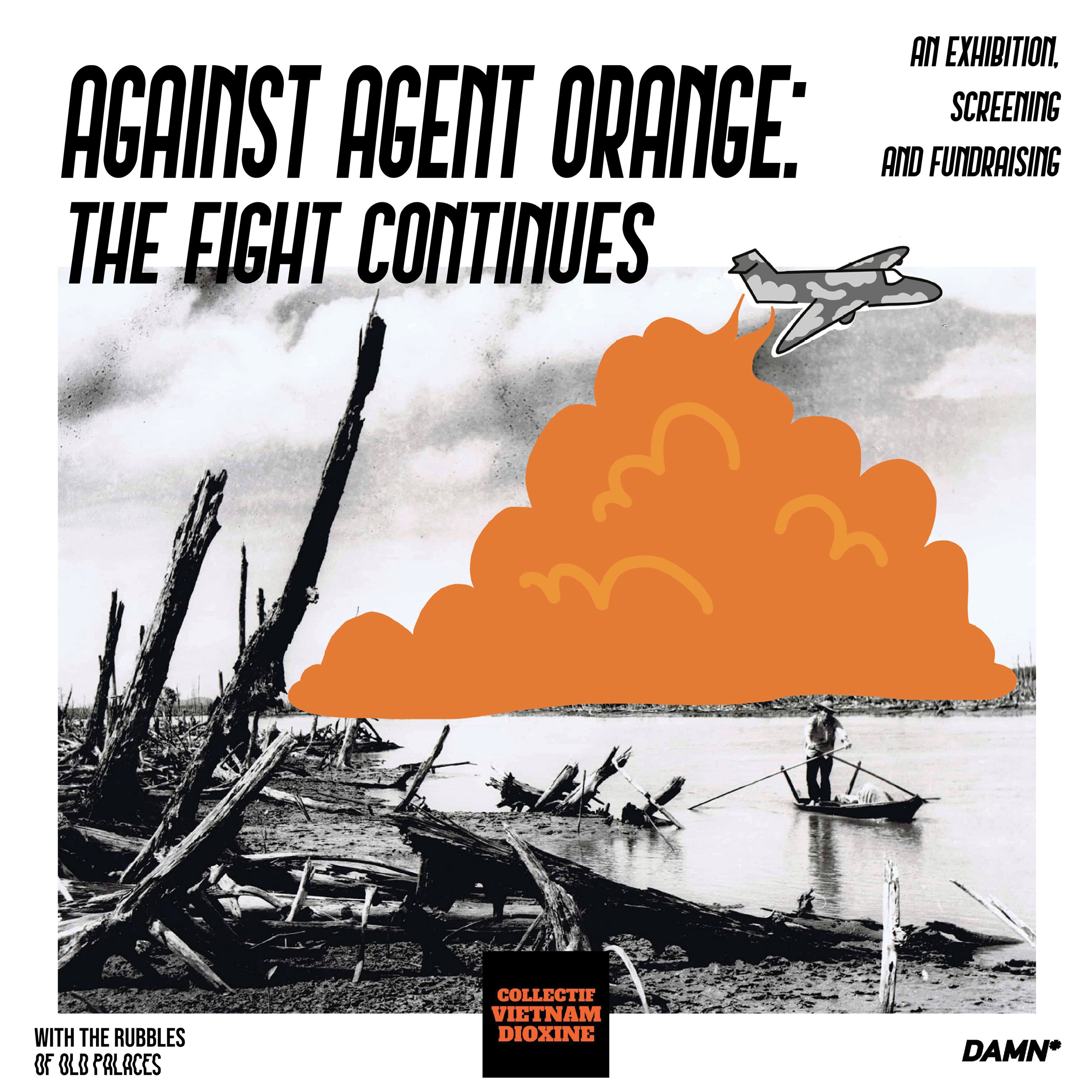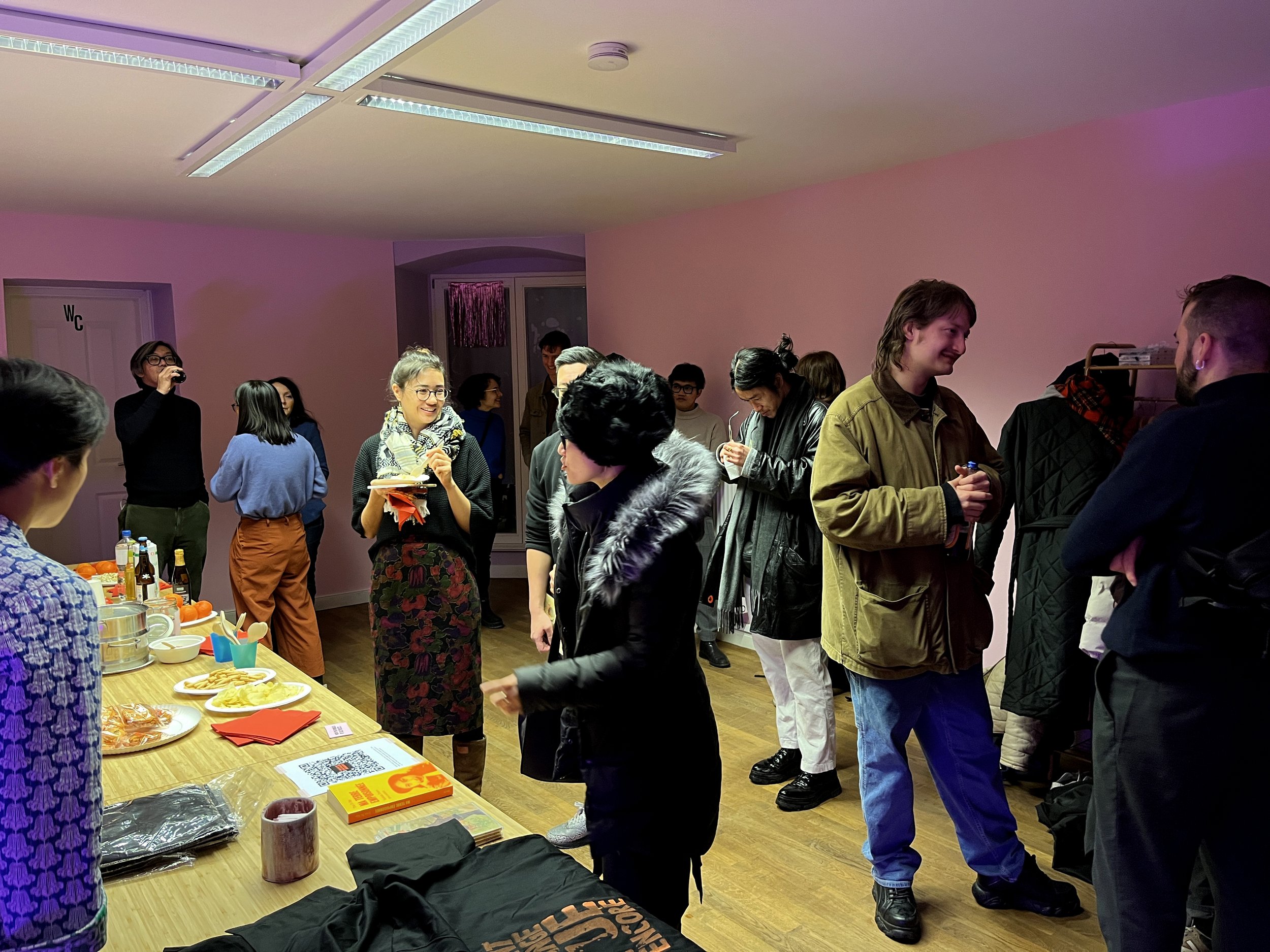Against Agent Orange: The Fight Continues
An art exhibition, screening, community gathering and fundraising.
On the occasion of the Tết 2023 (Vietnamese New Year), the Collectif Vietnam Dioxine (CVD) is joining forces with DAMN* (Deutsche Asiat*innen Make Noise) and “with the rubbles of old palaces” to present an exhibition on Agent Orange by illustrator Trâm-Anh, accompanied by the screening of Thuy Tiên Ho's and Laurent Lindebring’s movie “Agent Orange, a Time Bomb” (57mins). The screening will be followed by a Q&A with the director on zoom, while Trâm-Anh and several members of CVD and DAMN* will be present at the event. On this occasion, CVD will be raising money to support Madame Trần Tố Nga, one of the victims of Agent Orange, in her lawsuit against Agent Orange’s manufacturers such as Monsanto and Dow Chemicals.
CLICK HERE TO DONATE TO THE FUNDRAISING
What is Agent Orange?
Agent Orange is a herbicide developed by the US army in 1940. It was the most heavily used herbicide by the US army during the Vietnam War. The herbicides were used to defoliate the forests (in order to draw out the Vietnamese Guerilla fighters who were hiding in the jungles), to clear the military bases and to destroy enemy crops. Its main chemical is Dioxin.
Dioxin is a cancerous substance and teratogenic (products that cause malformations in newborns). It causes skin diseases and attacks the immune system, reproductive system, and nervous system. According to the latest estimates, between 2.1 and 4.8 million Vietnamese were directly exposed to herbicides between 1961 and 1971, to which must be added an unknown number of Cambodians, Laotians, American civilians and soldiers, and their various Australian, Canadian, New Zealand and South Korean allies. But the total number of victims is probably higher because dioxin is transmitted by contamination of the food chain: breast milk, cow's milk, consumption of contaminated meat or fish.
Sixty years later, dioxin-related symptoms are still present in Vietnam. Today, we can see that there is still a significant amount of dioxin in some very localised areas. Three generations of Vietnamese are affected by herbicides. Malformations, hyperencephaly, skin diseases, cancers, nervous system or brain deficiency are some of the ailments suffered by the victims.
Have the United States accepted responsibility?
No, they still refuse all responsibility for the damages caused by herbicides, and have never paid even a cent to Vietnamese, Cambodian, and Laotian victims of Agent Orange and other defoliant. American veterans who were victims of Agent Orange filed a lawsuit against the manufacturers of Agent Orange, because they did not have the right to sue the American government. In 1984, these manufacturers signed a settlement agreement with the veterans' associations: in exchange for stopping all further lawsuits, the manufacturers paid $180 million to a compensation fund for American veterans who were victims of Agent Orange. In early 2004, the Vietnam Association for Victims of Agent Orange/Dioxin (VAVA) filed a lawsuit against the manufacturers of Agent Orange. The two main manufacturers involved are Monsanto and Dow Chemical. In France, a lawsuit is currently underway against the manufacturers, including Monsanto, initiated by Mrs. Trần Tố Nga, a French victim of Agent Orange/Dioxin.
WHO ARE WE?
CVD (Collectif Vietnam Dioxine) is a collective based in France that brings together individual volunteers and partner organisations to fight for the official recognition and reparations for the effects of the use of Agent Orange during the Vietnam War. We support all the victims of Agent Orange and MrsTrần Tố Nga in her lawsuit against Agent Orange ’s manufacturers. We also fight for the recognition of the crime of Ecocide.
IG: collectifvietnamdioxine
FB: collectifvietnamdioxineofficiel
DAMN* (Deutsche Asiat*innen Make Noise) is a political platform and fluid activist collective that connects, amplifies and mobilises members and voices of the Asian diaspora in Germany.
IG: damn_berlin
The photograph on the poster is by Lê Minh Trường (Vietnam, 1970), with an illustration by Vo Trâm Anh.











